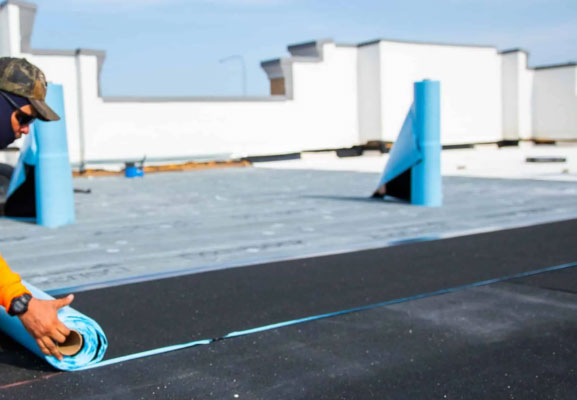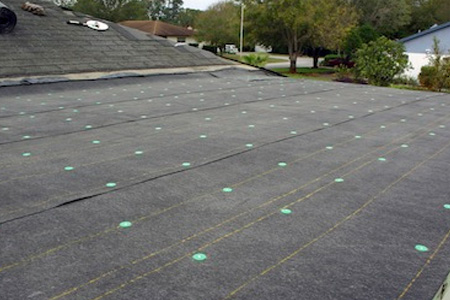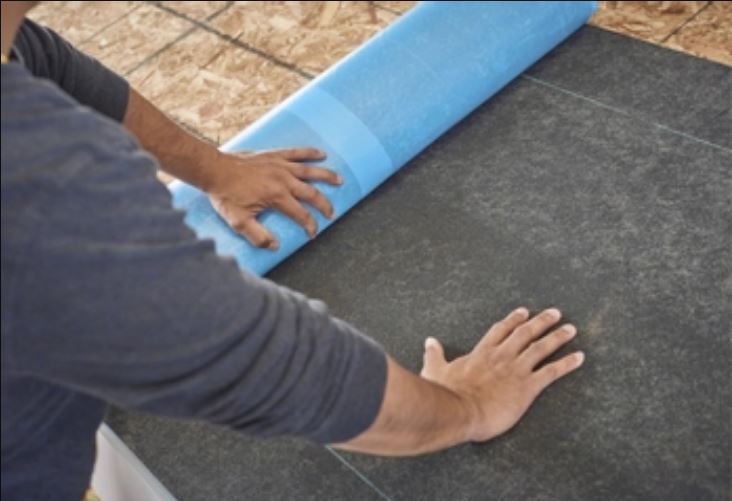Roofs have protected us from the elements for decades, shielding our homes from harsh weather conditions. But they’re not impervious to time and damage.
A popular choice for many homeowners and contractors alike is the peel-and-stick roofing underlayment, an innovation winning hearts, and homes with its straightforward application and impressive durability.
However, as with any product, it has its fair share of concerns that need addressing.
The evolution of roofing technology gave birth to products like PlyStik Plus and PlyStik SA-250, two state-of-the-art peel-and-stick underlayments that have revolutionized roofing practices.
Their charm lies in their easy installation and ability to stand the test of time. Yet, despite the numerous advantages, they often spark debates about potential future problems, mainly concerning their replacement.
The peel-and-stick underlayment technology can be overwhelming, especially when considering replacing it.

These underlayments come with a promise of longevity, but nothing lasts forever.
So, will there be problems when the time comes for a roof replacement? We’ve combed through years of scientific research, expert opinions, and practical experiences to bring you a well-rounded, authoritative answer.
The Peel-and-Stick Challenge
A prevalent concern with peel-and-stick underlayment is its removal when it’s time to install a new roof.
The underlayment has to be stripped off, which poses a significant challenge because the adhesive, built to withstand years of exposure, can stubbornly cling to the roof deck.
Consequently, the removal process might inflict damage on the OSB roof decking.
Faced with such concerns, many consider the alternative route—installing a non-stick synthetic underlayment on the roof deck first and then the peel-and-stick underlayment.
This method seems to solve the removal problem, but it has drawbacks.
For one, it involves paying for underlayment twice, and it might negate some of the key benefits of peel-and-stick underlayment—like wind resistance and moisture impermeability.

Furthermore, places like Florida, known for strict building codes, offer insurance discounts for peel-and-stick adhered directly to the roof deck, but not when it’s attached to another underlayment.
Replacement or Reinstallation: The Balanced View
But here’s the silver lining. In most scenarios, you may not need to remove the peel-and-stick underlayment.
When it’s time to reroof over an existing peel-and-stick underlayment, you can usually place a new one right on top of the original.
This becomes a viable option because peel-and-stick underlayments are designed to be permanent installations, able to withstand the installation of new roofs over them.
The only hiccup here could be covering over holes left by fasteners from the original roof.
It’s worth noting that there are exceptions to this rule. If you find two or more layers of underlayment on the roof, removing all of it is advisable before installing a new one.
Also, removal becomes essential if the underlayment has incurred severe damage or the deck underneath needs replacement.
A valuable tip here would be to remove as much underlayment as possible without causing damage. Then, you can install the new one over the remaining portion.
One benefit of peel-and-stick underlayment is its smooth and flat nature, which provides an excellent base for new installations without having to deal with ripples or wrinkles.
Reliable and Resilient: The Advantages of Peel-and-Stick
Now that we’ve navigated the problem let’s explore why peel-and-stick underlayments continue to be popular despite these concerns.
PlyStik Plus and PlyStik SA-250 offer impressive durability and resistance to harsh environmental conditions, making them ideal for heavy roofing materials like tiles, slate, or metal roofing.
These products are designed to be long-lasting, reducing the likelihood of frequent replacements.
A distinctive feature of these PlyStik products is their limited lifetime warranties, further emphasizing their durability and the manufacturers’ confidence in them.
Even when it comes to installing a new roof, the flat and smooth surface of PlyStik allows easy installation of new underlayment.
This extends the life of the underlayment significantly, potentially outlasting even the roof deck itself!
Pros and Cons of Peel-and-Stick Roof Installation in Florida
Though the initial investment for a high-quality peel-and-stick roof underlayment might deter some homeowners, it is essential to remember its critical role in extending the lifespan of your roof.
With a well-strategized roof replacement plan, you can manage and distribute costs without straining your budget.
However, the peel-and-stick underlayment does come with a challenge—it’s often tricky to remove this self-adhesive underlayment without damaging the roof.
In such cases, your roofing contractor may advise installing another layer on top of the existing underlayment or propose a more intricate removal procedure.
Pricing of Peel-and-Stick Underlayment: An Overview
The underlayment cost can fluctuate considerably based on the chosen material’s thickness and quality. Additionally, you must consider the total area of your roof and the accompanying labor expenses.
To provide a rough estimate, a typical Florida household could expect to pay more than $2000 to coat the roof with peel-and-stick underlayment.
At the same time, this may seem like a hefty investment initially, but remember that installing quality underlayment significantly safeguards your entire home in the long run.
Alternatives to Peel-and-Stick Underlayment: Asphalt Shingles Coating
Though peel-and-stick underlayment offers numerous benefits, homeowners may also consider other roofing solutions, like roof coating for asphalt shingles.
This technique can significantly enhance your asphalt shingles’ durability and weather resistance, extending their lifespan and overall performance.
Solutions for Shipping Containers: Roof Coating
Peel-and-stick underlayment is an excellent choice for traditional homes, but what about unconventional living spaces like shipping containers?
A robust roof coating for shipping containers might be more suitable for these unique structures, providing durable and weather-resistant protection tailored for these distinctive homes.
Optimal Protection for Flat Roofs: Specialized Roof Coatings
Peel-and-stick underlayment can work wonders on sloped roofs, but a specialized flat roof coating may be the optimal solution when dealing with flat roofs.
These coatings are formulated to protect against common issues associated with flat roofs, such as water pooling, providing a superior defense mechanism.
Pros and Cons: Silicone Coating
Lastly, while considering your options, it’s crucial to understand potential pitfalls.
Silicone roof coatings are popular for their durability and ease of application but can also come with challenges.
Learn more about potential silicone coating problems to make a well-informed decision for your roofing needs.”
Conclusion
Roofing solutions are never one-size-fits-all. However, peel-and-stick underlayment offers a fantastic option for those who value durability, weather resistance, and ease of installation.
Yes, the removal issue might seem daunting but remember that, in many cases, you won’t have to remove it at all.
This gives peel-and-stick underlayment an edge over other roofing problems, making it a worthy consideration for future roofing projects.

Arthur is a skilled roof worker with over 10 years of experience in the industry. He started his career as an apprentice and worked his way up to become a foreman.
When he’s not working on roofs, John enjoys with his family or writing posts. He is also a passionate cyclist.

